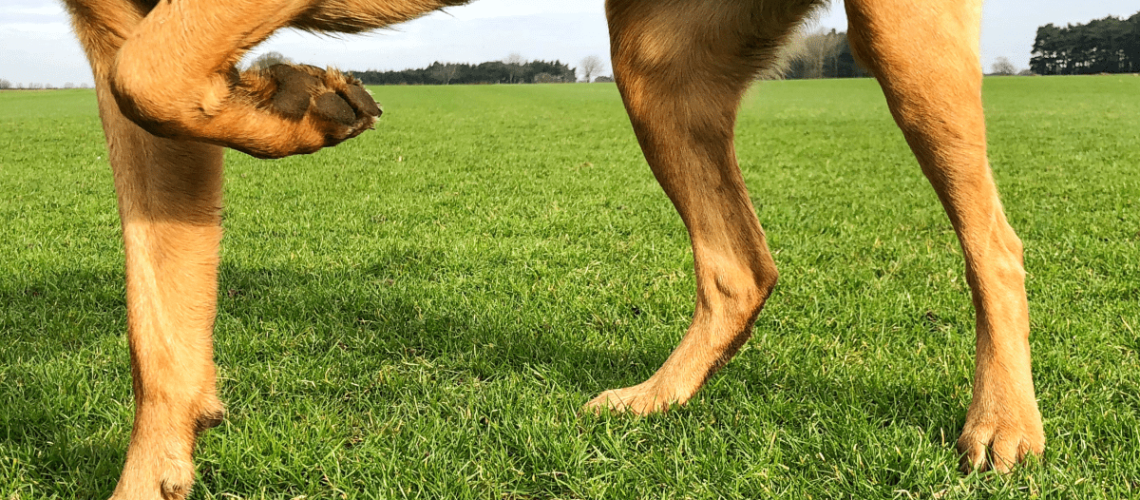Key Takeaways:
- Dog lameness can be caused by various factors such as injury, arthritis, infection, or neurological issues.
- It is important to identify the underlying cause of dog limping through a thorough physical examination and diagnostic tests like X-rays or blood work.
- Treatment options for dog lameness depend on the cause and may include rest, medication, physical therapy, surgery, or a combination of these.
- Early intervention and prompt treatment can help improve the prognosis and prevent further complications in dogs with limping.
- Regular exercise, maintaining a healthy weight, and providing proper nutrition can contribute to preventing some causes of dog lameness.
Are you a dog lover? Have you ever noticed your furry friend limping or favoring one leg? If so, then understanding the causes and treatment of dog lameness is crucial for their well-being. Whether you're a concerned pet owner or simply curious about canine health, delving into this subject can provide valuable insights and benefits. By learning about the various reasons why dogs limp and how to address these issues, you can ensure that your four-legged companion lives a happy and pain-free life. So let's dive into the fascinating world of dog lameness and discover how we can help our beloved pets stay on their paws!
Common Reasons Why Dogs Start Limping
Dogs can start limping for various reasons, and it's important to understand what might be causing their discomfort. One common reason is an injury or strain to their muscles or joints. Just like humans, dogs can twist or sprain their limbs while playing or running. This can lead to pain and limping.
Another common cause of limping in dogs is arthritis. Arthritis is a condition that causes inflammation and stiffness in the joints, making it difficult for dogs to move comfortably. As dogs age, they are more prone to developing arthritis, which can result in limping.
Other possible reasons for limping include fractures or breaks in bones, infections, ligament tears, or even cancer. It's essential to take your dog to a veterinarian for a proper diagnosis if they are experiencing persistent limping.
How a Dog's Age Affects the Likelihood of Lameness
A dog's age plays a significant role in their likelihood of experiencing lameness or limping. Puppies are more active and curious, which makes them more prone to injuries such as strains or sprains. Their bones are still growing and may not be as strong as adult dogs', making them more susceptible to fractures.
As dogs enter their senior years, they become more susceptible to joint-related issues like arthritis. The wear and tear on their joints over time can cause inflammation and pain, leading to difficulty walking and eventual limping.
It's important to provide appropriate care for both young and older dogs by ensuring they have a safe environment to play in and providing regular exercise that suits their age and physical abilities.
Breeds Prone to Limping: Which Dogs Are More at Risk?
While any dog can experience limping, certain breeds are more prone to specific conditions that may cause lameness. For example, large and giant breed dogs, such as Great Danes or Saint Bernards, are more susceptible to developing hip dysplasia. Hip dysplasia is a condition where the hip joint doesn't develop properly, leading to pain and difficulty walking.
Small breed dogs, like Chihuahuas or Dachshunds, are more prone to intervertebral disc disease (IVDD). IVDD occurs when the discs between the vertebrae in the spine degenerate or become herniated, causing pain and potential paralysis.
It's important to note that while certain breeds may be predisposed to certain conditions, any dog can develop limping regardless of their breed. Regular veterinary check-ups and proper care can help prevent and manage these conditions.
Signs and Symptoms of Painful Lameness in Dogs
When a dog is experiencing painful lameness, they may exhibit various signs and symptoms. Some common indicators include:
- Limping or favoring one leg over another
- Reluctance to walk or play
- Whining or whimpering when moving
- Swelling or inflammation around a limb or joint
- Licking or biting at a specific area
If you notice any of these signs in your dog, it's essential to consult with a veterinarian for an accurate diagnosis. They will be able to determine the underlying cause of the lameness and recommend appropriate treatment options.
Diagnosing the Cause of Your Dog's Limping
To diagnose the cause of your dog's limp, a veterinarian will perform a thorough examination. They may start by observing your dog's gait and movement to identify any abnormalities. They will also palpate the affected limb or joint to check for swelling, heat, or pain.
In some cases, further diagnostic tests may be necessary. These can include X-rays to assess bone structure and look for fractures or arthritis, blood tests to check for infections or underlying health conditions, or even advanced imaging techniques like MRI or CT scans.
Based on the examination findings and test results, the veterinarian will be able to determine the underlying cause of your dog's limp and recommend appropriate treatment options.
Treatment Options for Lame Dogs: What Can Help?
The treatment options for lame dogs depend on the underlying cause of their condition. Some common treatment approaches include:
- Rest and restricted activity: This allows time for healing in cases of strains, sprains, or minor injuries.
- Pain medication: Non-steroidal anti-inflammatory drugs (NSAIDs) can help alleviate pain and reduce inflammation in conditions like arthritis.
- Physical therapy: Therapeutic exercises and modalities can improve strength, mobility, and reduce pain in dogs with musculoskeletal issues.
- Surgery: In some cases, surgical intervention may be necessary to repair fractures, torn ligaments, or other structural abnormalities causing lameness.
The specific treatment plan will vary depending on the individual dog's condition and should be determined by a veterinarian. It's important to follow their guidance closely to ensure the best possible outcome for your furry friend.
In conclusion, there are various reasons why dogs may experience lameness or limping, such as injuries, arthritis, or infections. Treatment options can include rest, medication, physical therapy, or surgery depending on the cause and severity of the condition. It is important for dog owners to seek veterinary care to properly diagnose and treat their pet's limping for a better quality of life.
What medication is used for lameness in dogs?
Typical medications used to treat pain associated with limping in dogs include non-steroidal anti-inflammatory drugs (NSAIDs) like carprofen, meloxicam, firocoxib, and deracoxib.
How do you treat a dog with lameness?
When a dog experiences minor lameness, such as a sprain, it is typically sufficient to limit their exercise or have them rest for a few days. If the specific cause of the lameness is unknown, it may be necessary to reduce exercise and administer anti-inflammatory and pain-relieving medications to determine if the lameness improves.
What will vet do for limping dog?
The prescribed treatment for limping in your pet will vary depending on the underlying cause, ranging from a few days of rest and medication for inflammation, to more extensive measures such as surgery and rehabilitation. Additional methods such as bandages, splints, and physical therapy may be necessary, and in some cases, a joint health supplement may also be recommended by the veterinarian.
Can a dog recover from lameness?
Just like humans, dogs can experience muscle and joint soreness, especially after intense exercise. Typically, this limping in dogs is mild and they will usually recover within a few days.
When should I take my dog to the vet for lameness?
If your dog's limp does not improve, worsens, or is accompanied by whining or yelping, it is important to contact your veterinarian or go to the nearest emergency veterinary clinic. Your vet has the expertise to diagnose the cause and assess the seriousness of your dog's pain.
What infection causes lameness in dogs?
Anaplasma phagocytophilum is the primary bacteria linked to anaplasmosis, a condition that causes lameness and is often mistaken for Lyme disease. On the other hand, Anaplasma platys causes a reduction in platelet levels in the bloodstream.

















